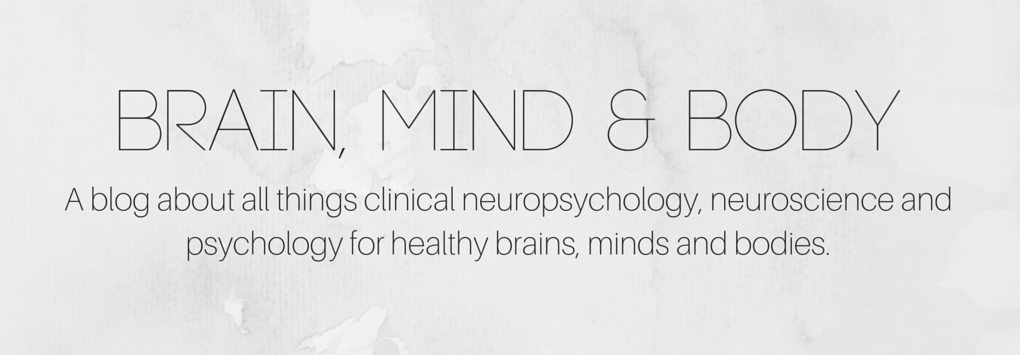 |
| #brainspo |
Most people are well acquainted with the positive effects of exercise on the body and the cardiovascular system. But how does exercise affect the brain and its cerebrovascular system; the workhorse that carries blood from the body to the brain?
There’s
plenty of evidence out there telling us that what’s good for the heart is good
for the brain, and that so much more is going on during exercise than that post
workout high alone.
The short-term effects.
As
your heart rate climbs during periods of voluntary movement and exercise,
there’s an immediate and parallel increase in the production of various neurotransmitters
(brain chemicals) that can have both temporary and long lasting positive
effects on the brain, the mind, and the body.
Exercise
is associated with increased production and release of neurotransmitters and
neurotrophic factors (proteins that support the growth and survival of neurons)
in the brain. There is also evidence to suggest that increases in both of these
things can promote neuronal growth and neuroplasticity (the brain’s ability to
reorganise itself by forming new neural connections). So in much the same way
as consistent exercise promotes muscle strength and growth in the body, it also
creates a parallel growth and strengthening of neural connections within the
brain.
Consistent
with the ‘brain-as-a-muscle’ analogy, many studies have suggested that the
areas of the brain that underpin higher-order thinking skills (the pre-frontal
cortex) and memory abilities (the medial temporal lobes and hippocampi) are
larger in individuals who
exercise regularly.
While
endorphins get most of the credit for the post-exercise rush, these pain-fighting,
mood-enhancing peptides actually only play a minor part. Increases in other
types of neurotransmitters have various and combined effects on the brain, and
in turn, our mood. For example, dopamine and norepinephrine work together as
the ‘feel-good’ combo that results in ‘runners-high’, while GABA
(Gamma-Aminobutyric Acid) acts as a ‘calming’ or inhibitory chemical that can increase
relaxation and help build immunity to stress.
While
all of these positive chemicals are increasing in concentration in the brain during
exercise, our stress hormones (cortisol and adrenaline) decrease after regular
exercise, further enhancing the stress-relieving, neuroprotective benefits we
reap in the aftermath.
The longer-term bonuses.
The
neurogenesis and neuroplasticity that exercise promotes are not limited to
short-term effects. Neuronal growth, strengthening and reorganisation can
increase stress tolerance and enhance cognitive function (e.g. memory, attention, concentration, mental flexibility, and inhibitory
control) long after you’ve finished your run. As a result, evidence has shown
that exercise promotes improved cognition and academic performance in children,
increased productivity in adults,
and delays cognitive decline in older individuals.
Exercise
also reduces your cardiovascular risk factors; it helps lower blood pressure,
heart rate and cholesterol. This reduces the chance of stroke and heart
disease, while preserving cognitive function and quality of life across the
lifespan.
In an
interesting recent study, researchers found exercise to increase levels of GABA
and glutamate (another neurotransmitter), both of which are known to be
depleted in the brains of individuals with mood and anxiety disorders. Using MR
spectroscopy, they demonstrated increased concentrations of GABA and glutamate
after exercise in areas of the brain that underpin processing of visual
information, emotions, and specific cognitive functions.
Improved
mood and lowered anxiety have also been shown to promote adherence to regular exercise
programs, showing us
that it’s not just an empty motivational spiel, but working out does actually
get easier the more you do it!
Finally,
regular exercise can also increase your pain tolerance, and who wouldn’t say
yes to that? A recent meta-analysis demonstrated that while athletes experience
pain similarly to other active adults, their ability to withstand pain was
significantly greater. Another
study showed that in a group of healthy adults following a 6-week structured
training schedule, pain tolerance increased significantly at the completion of
the program.
The verdict's in...
The brain, the mind and the body all reap countless benefits from regular exercise, and there’s no shortage of evidence to prove the case. The best part is, even 20 to 30 minute bursts of regular exercise are all you need to get your brain and body pumping to their maximum potential.



